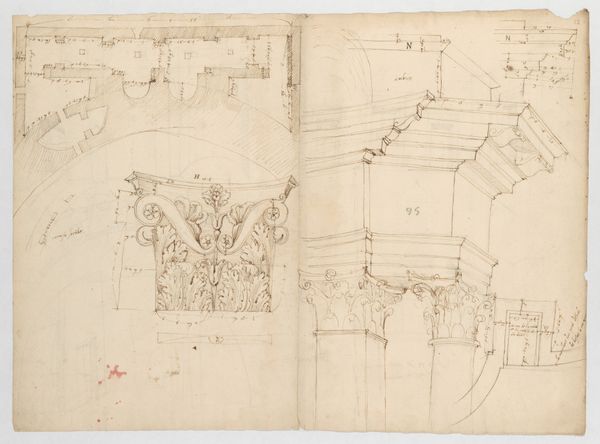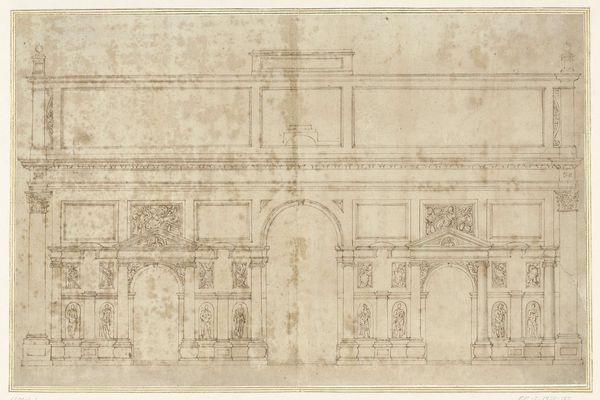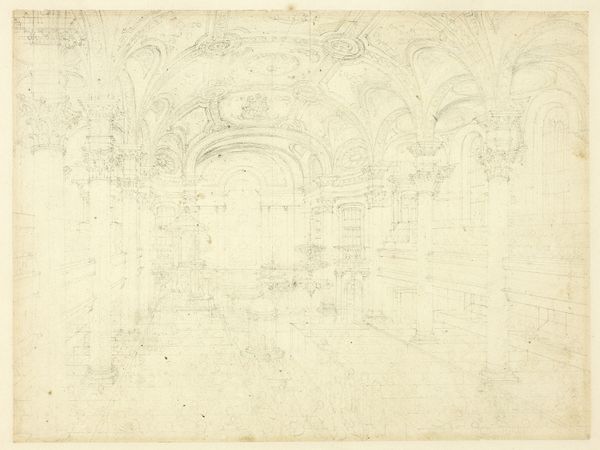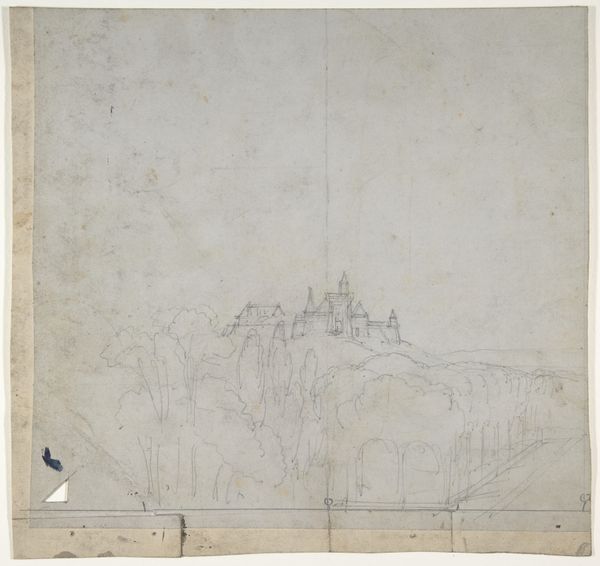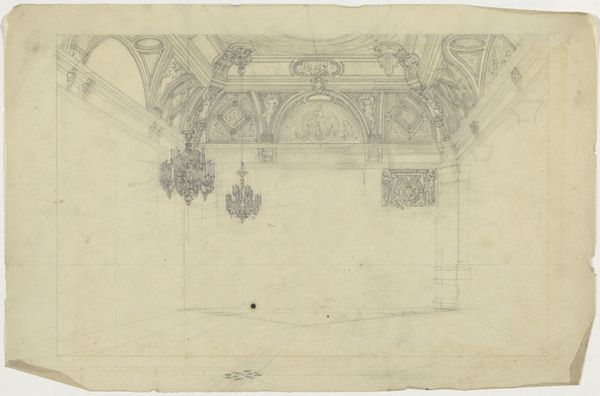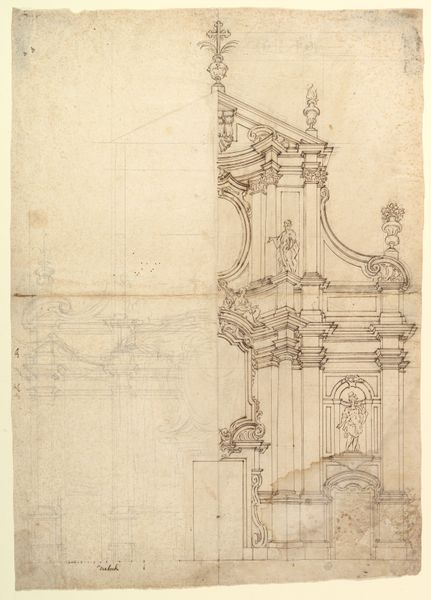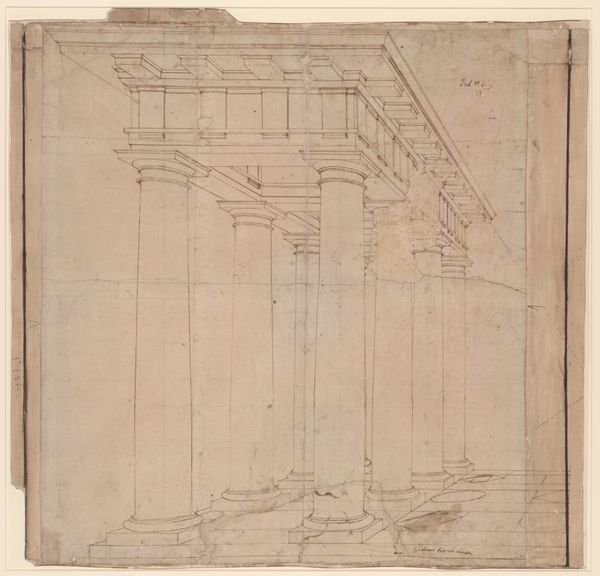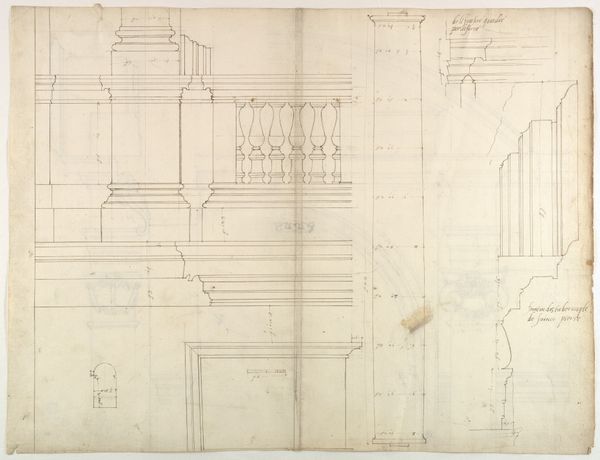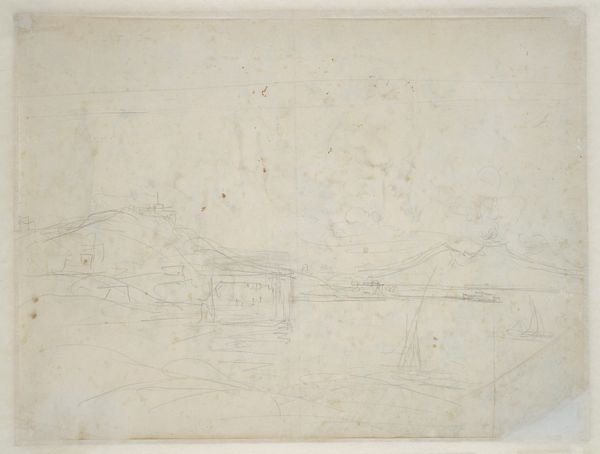
drawing, print, paper, pencil
#
drawing
# print
#
landscape
#
paper
#
form
#
coloured pencil
#
pencil
#
line
Copyright: Public Domain
Editor: Here we have Eugène Cicéri's "Design for a Stage Set," created sometime between 1828 and 1890. It looks like it’s made with pencil, colored pencil, and ink on paper. The meticulous lines and gridded structure give the drawing a very technical feel, like a blueprint. How would you approach interpreting this work? Curator: Considering it as a design for a stage set demands we examine the labor and materiality embedded within. The grid, the precise lines - these aren't just aesthetic choices, they’re the very means by which a theatrical illusion is constructed, likely using specific types of paper and drawing tools produced in factories. How does the technical precision evident here both serve and potentially limit artistic expression? Editor: That’s a really interesting point, looking at it as an artifact of production. I was so focused on the artistry, I almost missed the technical elements. Curator: Exactly. Consider the social context, too. The 19th-century theatre was a commercial enterprise, and this design reflects that reality. The drawing becomes a crucial link in a chain involving architects, stagehands, painters, and actors, each contributing their labor. Are the materials meant to convey grandeur and wealth for a paying audience? How does the availability of certain materials in Cicéri's time influenced the look of the design itself? Editor: I never thought about the actual physical process being so crucial to interpreting a stage design. It’s fascinating how focusing on materials and labor can reveal so much about the context of the piece. Curator: Right. The division between "high art" and "craft" becomes blurred when we focus on the practical creation. Looking at how labor and commerce intersects makes a difference. Editor: I'll definitely look at art differently now. It's about more than just what’s on the surface.
Comments
No comments
Be the first to comment and join the conversation on the ultimate creative platform.


